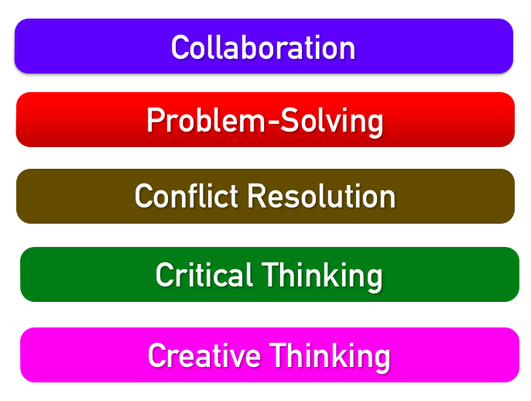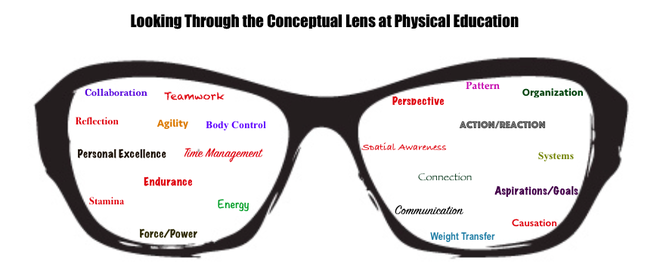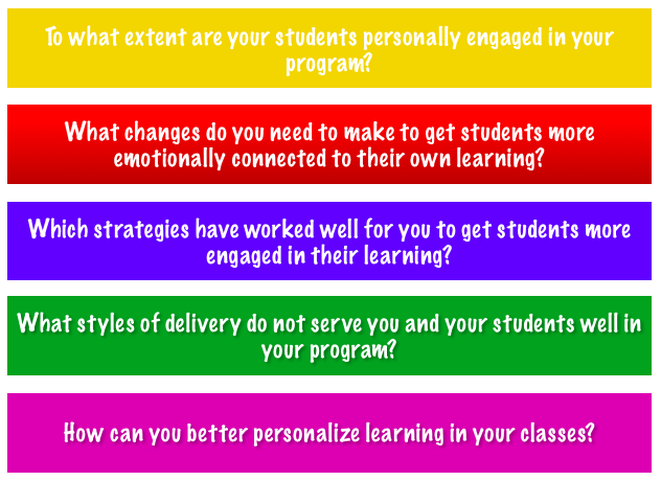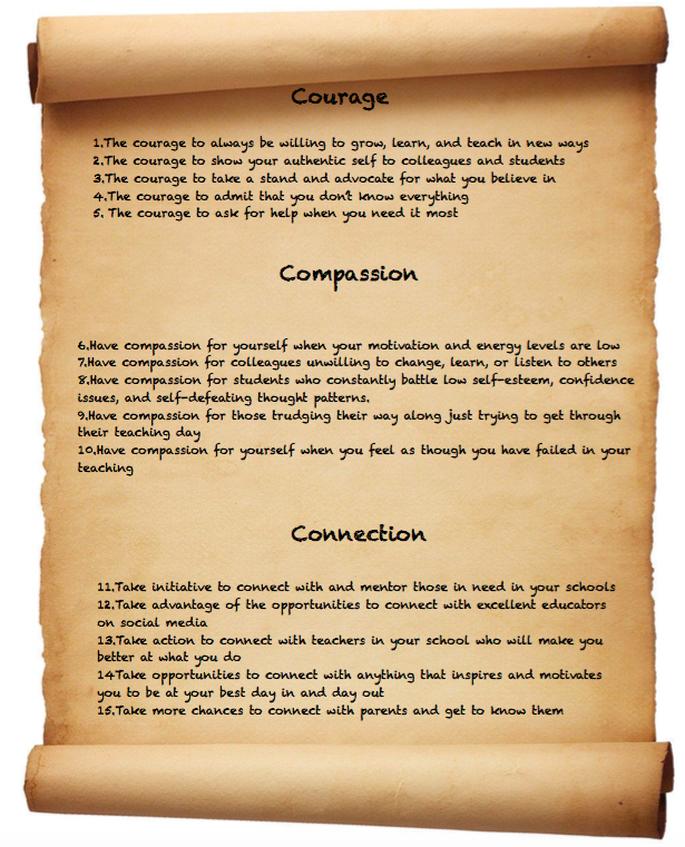To what level are students authentically taking action in your programs?The ultimate aim of the Primary Years Program is for students to effectively take action with their own learning. 'Taking action' can define itself in many ways depending upon the student themselves, the community that they belong to, and the school in which they learn. The International Baccalaureate Primary Years Program states that: The actions that the students choose to take as a result of the learning may be considered the most significant summative assessment of the efficacy of the program. The handbook also states that action begins at the most immediate and basic level and works outward from there (pg26 Making the PYP Happen). If we are to create meaningful learning experiences that are relevant to the the lives of our students both inside and outside of school, will this provide them with more opportunities and inspiration to take action? As physical educators, we need to look at 'taking action' from a very different perspective, not necessarily just related to sport and being active. When we look at the social, emotional, and cognitive learning that takes place in physical education, we are providing our students with countless opportunities to work on developing essential life skills that can and should be applied far beyond the walls of our gymnasiums. Here are but a few of the life skills mentioned by the PYP. There are several more of course, but as starting point, let's thinking about how we teach these skills in particular in our programs. As our students develop these skills, our hope is that they demonstrate them with consistency in their lives. As educators, there is no question that it can be very difficult to actually measure whether or not our students are genuinely putting into action these important life skills when outside of our spheres of influence. However, it is critically important that we set up our teaching environments to not only model these skills but to also provide continual opportunities for students to put these skills into practice in our programs.
Is it too idealistic to think that what we do with our students in physical education will only have a certain reach beyond our classrooms and gymnasiums? I certainly don't. I firmly believe that we have tremendous opportunities to massively impact the futures of the young people that we teach. I hope you do too!
0 Comments
Physical skill development in our PE programs is an absolute priority. Our students must be able to learn and demonstrate a mass of physical skills related to sport and movement in order to one day become physically literate individuals. I'd be surprised if any teacher had an argument against the importance of developing physical literacy in PE. However, the point of this blog post is not to argue the importance of physical literacy, but to question to what extent we are actually addressing conceptual learning in PE. As we plan the questions that we ask our students, the learning experiences they will be engaged in, the discussions that take place in class and the assessment tasks to be delivered, it is imperative to look through the conceptual lens of PE and identify which concepts are most worth exploring in the units being taught. These concepts will often transcend the specific units being taught and even the subject area of PE itself which is essential in helping students to understand these concepts at a much deeper level across the curriculum. When we become more conscious of our planning and think at a deeper level in regards to the experiences we offer our students, looking through this conceptual lens allows us to identify essential concepts that will drive all of the learning that happens in the units we teach in PE. At times we will find that the concepts we have chosen could also apply in other subject areas as well, therefore creating opportunities to authentically integrate learning across the curriculum. At this point, collaboration with classroom teachers takes on a whole new meaning as it's no longer all about the activities being done but more so about the conceptual learning taking place.
Co-Construction of Conceptual Questions Collaboration time with classroom teachers can be made so much more meaningful when teachers sit down to co-construct the conceptual questions to be used in the classroom and in PE. The idea is that the same conceptual questions can be used in both the classroom setting and in PE thus reinforcing and deepening the learning that takes place with our students. When the classroom teacher and PE teacher can identify concepts that apply in both the unit happening in the classroom and the unit happening in PE, it is the perfect time to co-construct questions to be used that address these concepts. As these conceptual questions are being explored in PE, the students will be engaged in activities, games, and tasks that help to develop the physical skills necessary to be addressed in the units being taught. Taking on this conceptual focus does not mean that opportunities to explore and develop physical skills will be watered down and made less meaningful in the process of learning. I believe that the entire learning process is enhanced by bringing more of a conceptual focus to our teaching regardless of the subject area being taught. Two questions to reflect on as you finish reading this post: A) How do you address conceptual learning in your PE program? B) What opportunities exist for you to make more meaningful and relevant conceptual connections across the curriculum? Personal and Intellectual Engagement in Your ProgramThe ultimate goal of any educator who cares deeply about what they do is to ensure that all of their students are authentically engaged in the learning process. These educators understand that learning will look very different within their classes and that no two students really learn alike.
As physical educators, we see a vast range of skills, abilities, mindsets, and levels of engagement on a daily basis in our gymnasiums. The design of the learning that takes place in our teaching space is entirely dependent upon our students themselves and needs to be engineered in a way that truly helps to sustain their levels of motivation and engagement over the long haul of the school year. At times I think that we have a tendency to jump too quickly into what we feel is important to teach without paying close enough attention to finer details related to creating a warm and nurturing environment that captures our students’ desire to learn. This blog post is a reminder to me just as much as it is for you to remember to never overlook the importance of the subtle details of our teaching and the impact that they can have on student learning. Getting students emotionally involved in their learning plays a powerful role in helping them to become more personally and intellectually engaged. The science clearly shows that personal and intellectual engagement deepens learning and can lead to young people taking more initiative and action in their own lives when outside the walls of their schools. If we are to increase levels of engagement in physical education and help students to embrace being physically active for life, we must work to create a teaching environment that gets them more emotionally connected to their learning. As the world continues to change at a blindingly quick pace, physical movement is essentially being engineered out of peoples’ lives. We need only look around us each day to see countless examples of decreased physical activity in young people. It is essential to create and deliver learning experiences that lead to greater levels of personal and intellectual engagement in our programs. However, we can all be bogged down at times by the requirements of the curriculums in which we teach. It is understandable that there is specific content that must be taught within a certain timeframe in our programs. There can be a mountain of pressure placed upon teachers to show evidence of learning and growth and with this pressure comes a sense of urgency to get it all done, to blast content left and right at our students. This can be a disservice to our students, especially the ones who struggle with personal and intellectual engagement in physical education. I’m wondering what types of strategies work best to engage students on a more personal and intellectual level in physical education. I’ve included 5 questions below for you to reflect on in regards to the way in which you deliver your program as it is essential to continually think about your own practice and ways to engage your students on a deeper level in PE. The Power of Courage, Compassion, and Connection in Our Teaching PracticeAs educators, there are certain attitudes, core values, and character traits that we try to entrench within the young people that we teach in hopes to provide them with the social tools necessary to succeed in building healthy relationships as they grow older. It’s not only about building positive relationships, but equally important is getting our students to dig deep to understand their own mindset and to evaluate things that may get in the way of them achieving success in their overall school experience. We take every opportunity possible to stress the importance of having a growth mindset and getting our students to believe in themselves. And that failure and mistakes are a natural part of their learning journey that need to be embraced and used as a springboard to further growth in the areas that they are striving to improve upon.
My point is that there is no doubt that we say and do all of the right things when it comes to empowering our students to take initiative to be the best that they can be. Without question our hearts are in the right place when it comes to fulfilling our responsibilities as an educator. However, in being our best selves, how often do we overlook the importance of our own well-being? In Brene Brown’s best selling book, ‘The Gifts of Imperfection’, she delves deeply into the concept of ‘shame’ and shares years of research that she has done on the topic. Shame is an emotion that we all experience and even though we may not be able to place our finger on the emotion itself when we are in the midst of a shame crisis, it can linger within us, manifesting itself in different ways in our lives. It usually involves judging or being judged, feelings of isolation, and thoughts that we simply do not or cannot measure up to those around us. Through her years of work, Brene Brown concludes that it is imperative to understand that we are not defective or alone in our experiences and realizing this is the first step towards developing ‘shame resilience’ which is the ability to address shame in a healthy way. Brown also emphasizes that three factors play a critically important role in helping to truly find our authentic selves; Courage, Compassion, and Connection. It is my belief that regardless of if we are a first year struggling teaching who is working hard to find their feet or an experienced veteran who has loads of confidence in themselves as an educator, it is imperative to not lose sight of just how important the concepts of Courage, Compassion, and Connection play in helping us to be the best that we can be. The concepts of Courage, Compassion, and Connection revealing themselves in our teaching can take on many different forms and levels depending upon who we are and our own experiences in life. I’ve always felt that finding inspiration to stay motivated is critically important to our long-term well being and effectiveness as an educator. There are no two teachers alike, so what motivates one may not motivate another. I’ve spoken to and received emails from some teachers saying that they’ve had it pretty good in life. That they came from a loving family with hugely supportive parents. That they never really experienced any hardship in their lives and had a rewarding experience as a student themselves when they went through their schooling years. These teachers have said to me that they have no problem staying motivated and don’t necessarily need to seek out inspiration to be at their best. These teachers should indeed consider themselves very fortunate and lucky to have had such a wonderful support network and rewarding experience as a student. However, I caution these teachers to be very careful and to reflect on their own attitudes about learning and ways of teaching. Because these richly rewarding experiences had come to them with relative ease and without struggle or hardship, it can be easy to slip into a biased way of thinking when it comes to the way others learn and cope with adversity. I’m not implying that these teachers don’t care or are not good at what they do. Many of them are excellent educators. However, I want to stress that it is imperative to think about and reflect on the attitudes that we have about learning based upon the way we learned ourselves throughout our schooling years. The Power of Courage, Compassion, and Connection No matter how good of an educator we think we are, the powerful concepts of courage, compassion, and connection apply to each and everyone of us. By looking at what these concepts mean in our own lives as educators, there are specific things that we can do that will immediately impact our own teaching practice and to better those around us as well. I hope you will take the time to look at the list that I created below of 15 different ways to bring courage, compassion, and connection more alive in your teaching practice. What things on the list are you already putting into practice in your teaching? What things might you do better? What things would you struggle with the most? Would love to hear your thoughts. Thanks for reading. |
AuthorKAUST Faculty, Pedagogical Coach. Presenter & Workshop Leader.IB Educator. #RunYourLife podcast host. Archives
September 2022
|
- Welcome
- All Things Teaching and Learning
- The Aligned Leader Blog
- Consulting and Coaching Opportunities
- My TED X Talk
- My Leadership Blog
- Run Your Life Podcast Series
- How PYP PE with Andy Has Helped Others
- Good Teaching is L.I.F.E
- The Sportfolio
- Example Assessment Tasks
- PYP Attitude Posters (printable)
- Publications





 RSS Feed
RSS Feed
